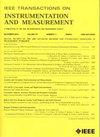多变量多故障场景下故障检测与隔离的试验优化选择
IF 5.6
2区 工程技术
Q1 ENGINEERING, ELECTRICAL & ELECTRONIC
IEEE Transactions on Instrumentation and Measurement
Pub Date : 2025-06-19
DOI:10.1109/TIM.2025.3579828
引用次数: 0
摘要
测试优化选择(TOS)是可测试性设计中的一项关键技术,通过提高产品的可维护性和可靠性,同时降低全生命周期成本,在智能制造中发挥着关键作用。随着智能制造系统对可靠性和效率的要求越来越高,有效的TOS方法是保证实时故障诊断和预测性维护的必要手段。然而,现有的TOS方法在度量建模中没有充分考虑测试结果之间的相关性,并且对由多个故障引起的低故障隔离率(FIR)提供有限的解决方案。通过D-vine copula和Bhattacharyya系数法考虑故障检测率(FDR)和FIR指标,并结合改进的二元粒子群优化(DVBC-IBPSO)方法,开发了一种创新的TOS方法,以最小化所需测试点的数量。首先,将D-vine copula方法引入测试指标模型,有效捕获测试结果之间的强相关性。其次,针对多故障引起的模糊群问题,提出了一种DVBC组合方法来量化故障分布之间的相似度,并对FIR度量进行建模;第三,利用构建的测试度量模型,采用IBPSO算法,结合新设计的目标函数,选择最具成本效益的测试点,同时确保FDR和FIR保持在可接受的阈值内。该方法通过优化故障诊断流程和改进系统整体健康管理,提高了智能制造系统的可靠性和效率。通过对工业系统中常用的一种关键电路的实验研究,验证了该方法的有效性。本文章由计算机程序翻译,如有差异,请以英文原文为准。
Test Optimization Selection for Fault Detection and Isolation Under Multivariable and Multifault Scenarios
Test optimization selection (TOS) is a crucial technology in testability design, playing a key role in intelligent manufacturing by enhancing product maintainability and reliability while reducing life-cycle costs. As intelligent manufacturing systems demand higher reliability and efficiency, effective TOS methods are essential for ensuring real-time fault diagnosis and predictive maintenance. However, existing TOS methods inadequately account for correlations between test outcomes in metrics modeling and offer limited solutions to the low fault isolation rate (FIR) caused by multiple faults. An innovative TOS approach is developed by considering fault detection rate (FDR) and FIR metrics via the D-vine copula and Bhattacharyya coefficient method, along with an improved binary particle swarm optimization (DVBC-IBPSO) method to minimize the number of required test points. First, the D-vine copula method is introduced to model test metrics, effectively capturing strong correlations between test outcomes. Second, considering the ambiguity group problem induced by multiple faults, a DVBC combined method is developed to quantify the similarity between fault distributions and model the FIR metric. Third, leveraging the constructed test metrics models, an IBPSO algorithm is employed by incorporating a newly designed objective function that selects the most cost-effective test points while ensuring FDR and FIR remain within acceptable thresholds. The proposed method enhances the reliability and efficiency of intelligent manufacturing systems by optimizing fault diagnosis processes and improving overall system health management. Its validity is established through experimental studies on one commonly used critical circuit in industrial systems.
求助全文
通过发布文献求助,成功后即可免费获取论文全文。
去求助
来源期刊

IEEE Transactions on Instrumentation and Measurement
工程技术-工程:电子与电气
CiteScore
9.00
自引率
23.20%
发文量
1294
审稿时长
3.9 months
期刊介绍:
Papers are sought that address innovative solutions to the development and use of electrical and electronic instruments and equipment to measure, monitor and/or record physical phenomena for the purpose of advancing measurement science, methods, functionality and applications. The scope of these papers may encompass: (1) theory, methodology, and practice of measurement; (2) design, development and evaluation of instrumentation and measurement systems and components used in generating, acquiring, conditioning and processing signals; (3) analysis, representation, display, and preservation of the information obtained from a set of measurements; and (4) scientific and technical support to establishment and maintenance of technical standards in the field of Instrumentation and Measurement.
 求助内容:
求助内容: 应助结果提醒方式:
应助结果提醒方式:


